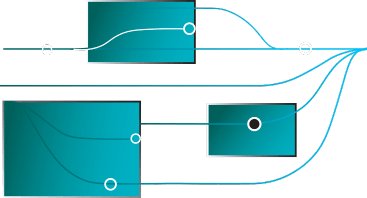Practical Ways To Manage Product Quality From The Start

In today's highly competitive market, where customer expectations are higher than ever before, it's crucial to prioritize quality at every step of the software development process. Fortunately, there are practical ways to manage software product quality to help you avoid these pitfalls and deliver a product that meets and exceeds your customers' expectations. In this article, we'll explore these strategies in-depth, so you can ensure that your next software product is a resounding success.
But first, let's explore what is product quality?
How do we define product quality?
Product quality is about the level of excellence or superiority of a product in meeting or exceeding its intended users' or customers' expectations and requirements. It encompasses various aspects such as functionality, reliability, durability, safety, aesthetics, and value for money.
Now how to ensure the highest product quality? Managing product quality from the start involves a comprehensive approach to quality management that begins at the earliest stages of product development and continues through the entire product life cycle. Here are some critical steps to manage product quality from the start, with the importance of why your business should make optimal use of it.
Best Practices for Ensuring Product Quality from Inception
1.Define quality standards
The first step in managing software product quality is to define quality standards. Quality standards should be specific, measurable, and achievable. It should also be communicated clearly to all team members to understand what is expected of them. Quality standards can include usability, functionality, performance, security, and scalability.

2. Adopt a testing strategy
Adopting a testing strategy ensures high software product quality and customer satisfaction. In today's competitive business landscape, customers expect products that work seamlessly, efficiently, and with minimal errors. A testing strategy can help businesses meet these expectations by identifying issues and bugs early in the development process, ensuring that the final product is of the highest quality. A few pointers while maintaining a testing strategy:
- Define testing goals
- Choose appropriate testing methods
- Set realistic timelines
- Prioritize testing based on risk and impact
- Establish clear communication channels between testers and developers
3. Use code reviews
Code reviews are an effective way to manage software product quality. Code reviews help identify bugs, performance bottlenecks, and security vulnerabilities. In addition, a regular code review drill can supplement a robust ground where team members could be encouraged to provide feedback on each other's code. Finally, it can help ensure that code quality is consistent across the development team.
4. Implement a continuous integration/continuous deployment (CI/CD) pipeline
A CI/CD pipeline is a set of automated processes that allow for the continuous integration and deployment of code changes. CI/CD pipelines help ensure that software products are delivered quickly, reliably, and with high quality. In addition, implementing a CI/CD pipeline can help reduce the time taken to identify and fix issues, leading to better software product quality.
Moreover, implementing a CI/CD pipeline can positively impact team morale and motivation. By streamlining and automating the development process, developers can focus on creating innovative and impactful products, rather than getting bogged down by tedious manual tasks. This, in turn, can lead to a sense of accomplishment and pride in their work, further fueling their motivation to create exceptional software products.
5. Monitor performance and user behavior
Monitoring performance and user behavior is essential for managing software product quality. It can include monitoring system metrics such as CPU usage, memory usage, and network traffic. It can also involve monitoring user behavior, such as how users interact with the software product. Monitoring performance and user behavior can help identify issues early, improving software product quality.
6. Foster a Quality culture
Fostering a culture of quality is essential for managing software product quality. It means creating an environment where quality is valued and team members are encouraged to take ownership of the quality of the software product. It can involve training on quality best practices, recognizing team members who demonstrate a commitment to quality, and setting quality goals for the team.
The role of a quality engineer is rapidly evolving in today's software development landscape. Rather than bearing the sole responsibility for the quality, it is becoming increasingly popular for them to act as a "quality evangelist" in the team.
Do more with Test Automation
Discover more ways to add ‘low-code no-code‘ test automation in your workflows

7.Manage technical debt
Technical debt refers to the accumulation of work that needs to be done to maintain software products. Managing technical debt is essential for managing software product quality. This can involve regularly reviewing the codebase and identifying areas that need improvement. Technical debt can be reduced by refactoring code, improving documentation, and optimizing performance.
8. Stay up to date with industry trends
Staying up to date with industry trends is essential for managing software product quality. The software development industry constantly evolves, and keeping up with the latest developments is vital. It can involve attending conferences, reading industry publications, and participating in online forums.
9. Test Automation to Ensure top-notch code
Test automation is a powerful tool that can help manage product quality right from the start. By automating tests, developers can ensure that code changes don't introduce new bugs or regressions. This can save time and effort compared to manual testing and help catch issues early in development.
Using a test automation framework that suits your needs is also essential. There are many frameworks available, both open-source and commercial. And ACCELQ is the power engine you can use to fuel continuous test automation. It serves as the one platform that seamlessly caters to all your testing needs. In addition to choosing the proper tests and framework, it's crucial to integrate test automation into your development workflow. Meaning, running tests automatically whenever code changes are made, and making sure that failing tests are addressed promptly.
Quality First: The Key to Creating Exceptional Software Products
In conclusion, managing software product quality requires a combination of processes, tools, and culture. Beyond the Checklist, it's also about cultivating a Culture of Quality in your development team. It's no secret that customers demand high-quality products that meet their needs and expectations. Therefore, investing in quality from the start is an innovative and strategic decision that will set you apart from the competition.
Whether implementing test automation, improving your code quality, or prioritizing user experience, every effort you make toward quality will ultimately pay off.
Related Posts
 Design Thinking for Testers
Design Thinking for Testers
Design Thinking for Testers
 How ACCELQ Simplifies Middleware Testing for Modern Enterprises?
How ACCELQ Simplifies Middleware Testing for Modern Enterprises?



































